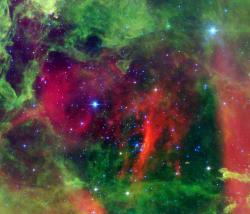 If you’re a newly forming star system, there’s no better place to be than a stellar nursery. All those raw elements make the perfect building blocks of stars and planets. The problem is that super hot giant stars can release great torrents of radiation, blasting away newly forming planets.
If you’re a newly forming star system, there’s no better place to be than a stellar nursery. All those raw elements make the perfect building blocks of stars and planets. The problem is that super hot giant stars can release great torrents of radiation, blasting away newly forming planets.
Continue reading “Cooler Stars Need to Keep Out of the Danger Zone”
Earth-Sized Planet Discovered in the Habitable Zone
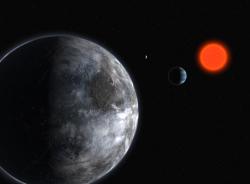 Great big Jupiter-like planets are one thing, but the Holy Grail of extrasolar planetary discover is going to be another Earth – complete with life. We’re not there yet, but astronomers announced the next best thing yesterday: a roughly Earth-mass planet orbiting within the habitable zone of its parent star. In other words, liquid water could exist on this rocky planet.
Great big Jupiter-like planets are one thing, but the Holy Grail of extrasolar planetary discover is going to be another Earth – complete with life. We’re not there yet, but astronomers announced the next best thing yesterday: a roughly Earth-mass planet orbiting within the habitable zone of its parent star. In other words, liquid water could exist on this rocky planet.
Continue reading “Earth-Sized Planet Discovered in the Habitable Zone”
Aliens on This World Would See a Double Sunset
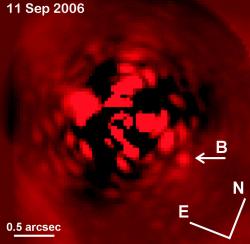 Imagine a world orbiting a star in a binary system. Two stars would shine in the day, and the rare nights would occur only when both stars had set below the horizon. Now astronomers have discovered a world where this is the case – the sunsets would be spectacular.
Imagine a world orbiting a star in a binary system. Two stars would shine in the day, and the rare nights would occur only when both stars had set below the horizon. Now astronomers have discovered a world where this is the case – the sunsets would be spectacular.
Continue reading “Aliens on This World Would See a Double Sunset”
Exoplanet is Hot and Dry
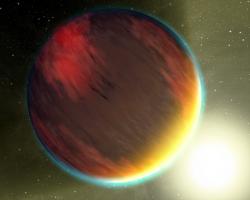 Astronomers working with the Spitzer Space Telescope announced a tremendous new advance today, when they used the great observatory to successfully analyze the atmosphere of two distant planets. This is an enormously important discovery, and we’ll deal with the implications of this in a second.
Astronomers working with the Spitzer Space Telescope announced a tremendous new advance today, when they used the great observatory to successfully analyze the atmosphere of two distant planets. This is an enormously important discovery, and we’ll deal with the implications of this in a second.
Continue reading “Exoplanet is Hot and Dry”
Hubble Sees An Extrasolar Planet’s Atmosphere
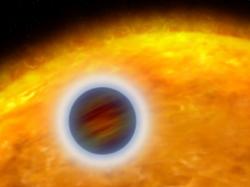 Now here’s a feat. The Hubble Space Telescope was able to analyze the atmosphere of a gas giant planet orbiting another star.
Now here’s a feat. The Hubble Space Telescope was able to analyze the atmosphere of a gas giant planet orbiting another star.
Continue reading “Hubble Sees An Extrasolar Planet’s Atmosphere”
Planets Born to a Dying Star
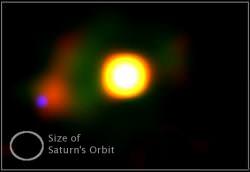 Young stars and new planets go hand-in-hand. But that might not always be the case. An international team of astronomers have discovered a situation where material shed from a dying star is being captured into a planetary disk around a binary companion.
Young stars and new planets go hand-in-hand. But that might not always be the case. An international team of astronomers have discovered a situation where material shed from a dying star is being captured into a planetary disk around a binary companion.
Continue reading “Planets Born to a Dying Star”
Blizzard of Snowflake Particles Around a Young Star
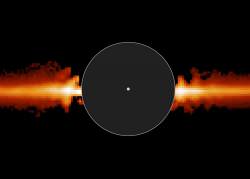 The Hubble Space Telescope has imaged a ring of dust around a nearby star that will probably become a system of planets. The star is AU Microscopii, and it’s located about 32 light-years away in the southern constellation of Microscopium (the Microscope). The particles are probably as fluffy as snowflakes, and about 10 times larger than typical interstellar dust grains.
The Hubble Space Telescope has imaged a ring of dust around a nearby star that will probably become a system of planets. The star is AU Microscopii, and it’s located about 32 light-years away in the southern constellation of Microscopium (the Microscope). The particles are probably as fluffy as snowflakes, and about 10 times larger than typical interstellar dust grains.
Continue reading “Blizzard of Snowflake Particles Around a Young Star”
On Some Planets, the Winds Go Supersonic
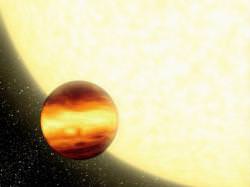 Think of the strongest wind you’ve ever experienced. No, think of the strongest wind anyone’s ever experienced. It still doesn’t hold a candle to the terrifyingly strong winds on some extrasolar planets. There are gas giants out there, with masses similar to Jupiter, that experience winds as strong as 14,400 kph (9,000 mph).
Think of the strongest wind you’ve ever experienced. No, think of the strongest wind anyone’s ever experienced. It still doesn’t hold a candle to the terrifyingly strong winds on some extrasolar planets. There are gas giants out there, with masses similar to Jupiter, that experience winds as strong as 14,400 kph (9,000 mph).
Continue reading “On Some Planets, the Winds Go Supersonic”
Gas Giants Turn Up Early After Star Formation
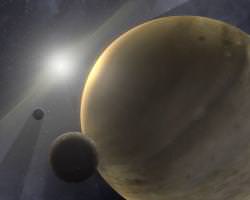 New research indicates that gas giants, like Jupiter and Saturn, form quickly after their stars do. In fact, they probably form within the first 10 million years of a star’s life, or else they never form at all.
New research indicates that gas giants, like Jupiter and Saturn, form quickly after their stars do. In fact, they probably form within the first 10 million years of a star’s life, or else they never form at all.
Continue reading “Gas Giants Turn Up Early After Star Formation”
New Planet Hunter Prepares for Launch
A powerful new instrument for finding extrasolar planets is about to launch: COROT (Convection Rotation and planetary Transits). Developed by the European Space Agency, COROT will search for planets using the transit method; it will be able to detect the slight drop in brightness as a planet moves in front of its parent star. If the observatory performs as expected, it should be able to detect rocky worlds just a few times larger than the Earth. COROT is scheduled to launch in December, 2006.
Continue reading “New Planet Hunter Prepares for Launch”
